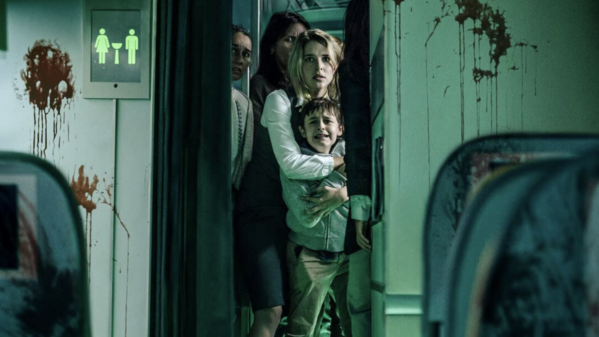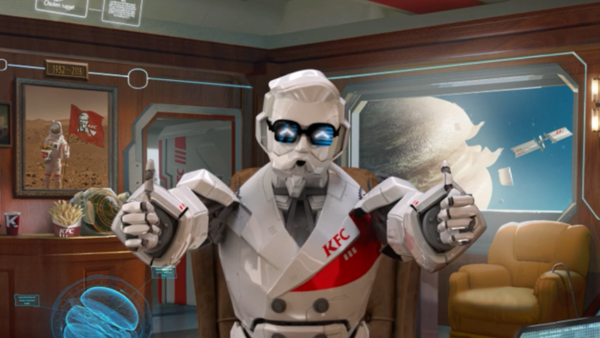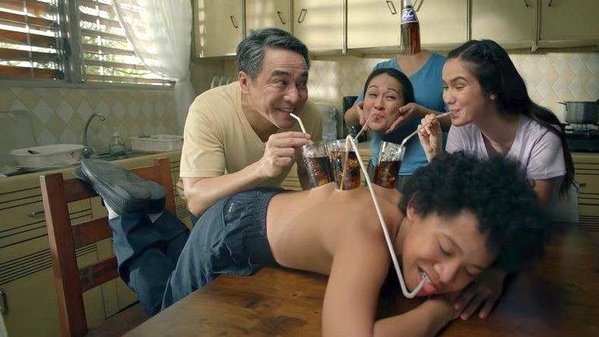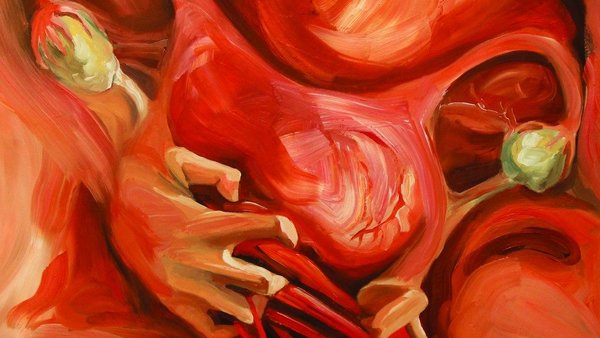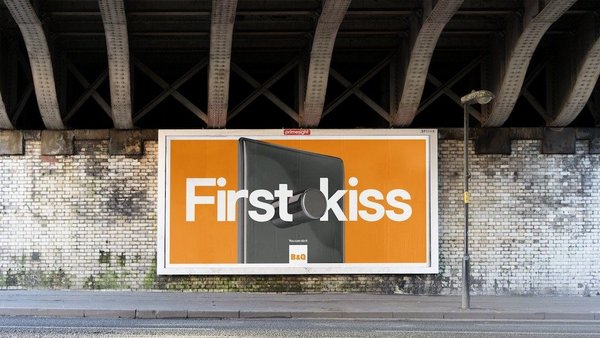Insight & strategy
The strategy behind Pfizer/BioNTech’s Because Of This vaccine ads /
How Pfizer, BioNTech and others used emotion to build vaccine confidence amid misinformation and widespread scepticism
Contagious I/O
/In early January, Pfizer, BioNTech and an alliance of healthcare associations launched the Because of This campaign to inspire confidence in the Covid-19 vaccine.
The campaign, created by Mischief @ No Fixed Address in collaboration with New York PR firm Dini von Mueffling Communications (DVMC), comprises four films featuring footage of real people’s personal moments found online. These spontaneous moments of togetherness were chosen to remind viewers of the moments we all hope to return to once people are safely vaccinated.
The PSAs are being aired on TV across the US, as well as online across Facebook, Instagram, Twitter and YouTube, and are aided by a national OOH media donation from Quan Media Group amounting to around $1.4m.
Anchoring these spots is the tagline ‘Science can make it possible. Only you can make it real’. The ads direct viewers to seek more information about Covid-19 vaccination at SciencePossible.com, which links to trusted third-party sites such as the Centers for Disease Control and Prevention (CDC), and the World Health Organization.
Contagious caught up with Greg Hahn, chief creative officer and co-founder of Mischief @ No Fixed Address, and Dini von Mueffling, founder and CEO of DVMC, to discuss how to build confidence in a product clouded by scepticism, the joys and struggles of using found online footage, and how make an emotional impact in 20 seconds.
Tell me about your relationship with Pfizer – how long have you worked together?
Dini von Mueffling: Pfizer and I have an excellent working relationship from a project we did together the year before last, and in August, they reached out to ask if we [DVMC] would like to work on a vaccine confidence campaign with them. I told them I wanted to work on this with Mischief. We've worked together in the past on campaigns for clients like Sandy Hook Promise, which is the leading gun violence prevention organisation, and for Monica Lewinsky. Their work is incredible and so Pfizer said ‘fine, bring them on board’.
And that was how it began, I knew that if we were going to work with Mischief it wasn't going to be a standard pharma campaign and I didn't want that for this.
Greg, how did you and the team at Mischief feel coming into this project?
Greg Hahn: I didn’t have a pharma background, so I was a little hesitant about getting involved with Pfizer. But I love the cause. And I trusted Dini, she wouldn’t bring us into this if she didn’t think it was right for us. Then having met our lead client there – it was amazing. He obviously took a chance with this, this isn’t what they normally do, and he shepherded it through, protected us and had such great vision and leadership there that I would take any assignment from him.
What were your preconceptions going in around pharma?
Hahn: Well, it’s a whole different skill set. There are so many regulations and there’s a formula to it. It’s just not what we do, it requires a different kind of agency, because you have to know how to negotiate that. Normally, pharma’s not known for going outside of a box, there’s a pretty tight structure you have to work with.
Von Mueffling: There are so many legal regulations that I think ultimately stymie creativity. But we worked within those regulations and were still able to be very creative, which was great.
Greg Hahn, Mischief @ No Fixed Address
When did you receive a brief for the campaign and what were the key business objectives?
Von Mueffling: The thing that really is important to note here is that this [the brief in August] was before they knew whether their vaccine worked and whether or not it would be approved, but they still wanted to do this campaign.
What they wanted more than anything was to support vaccination efforts, regardless of whose vaccine was going to be out there in the world.
Hahn: The main objective was to foster confidence in this vaccine. Vaccines in general have a ton of scepticism around them, but with this one in particular – since it came out so much quicker than a normal vaccine – there’d be even more doubts about it. And vaccine hesitancy costs innocent lives. If not enough people get vaccinated, then this disease does not go away. It really requires massive buy-in from society.
So that was the goal: to grow confidence, so we have more acceptance for the vaccine.
The objective of this campaign requires mass reach. Was there ever any discussion around tailoring to specific audiences?
Hahn: It’s a very intuitive brief, because we’re all living this, you don’t have to ask ‘who’s the target, what’s their life's been like, etc?’. Every day we’ve been affected by this and we know the doubts and we know the concerns and so it was a campaign where we had the strategy, but it’s also a lot of gut instinct.

Did you set out effectiveness metrics beforehand?
Hahn: There are different measures, [but overall] more openness. One way to measure openness is whether people went to seek out more information, so [tracking] people checking out the web address [SciencePossible.com] at the end of the spots, which led to more third-party objective information, and also sentiment studies.
What was your initial response when you received the brief?
Hahn: Umm, yes! And where can I get my shot? I was very open to it.
But it was daunting too. [Getting vaccinated] has a lot of built-in hesitancy and barriers to overcome. What could you possibly do to get people to change their minds about something that’s life or death? Where do you start? And how do you start? It’s a real task to chip away at those doubts.
Your first reaction is to back it up, show them the science, show them the data. There’s no arguing with it. But we’ve learned that doesn’t work with people. Today, facts are kind of seen as subjective. The way people really change their mind to make these decisions is emotionally. And then, they go out and find the facts that back up those emotions.
So, if we [through advertising] can move them emotionally and get them to be open to this idea of ‘wouldn’t it be great to have our old way of life back?’, then they could go out and find the facts and the figures that would support that.
Were there any other ideas in the running? Why was this one selected?
Hahn: We always come with a number of different directions. This wasn’t the only thing we showed them. It was just the one that, as quiet as it was, it stood out. We went back a couple of rounds with revisions to other campaigns and people just kept bringing this one up. It stuck with people and I think that’s because we can all see ourselves in it.
And it comes back to knowing you can't really argue with the somebody’s feelings. If we put facts and figures out there, you can find counter facts and figures or you can say you don’t believe it. But if you make someone feel something, that’s them convincing themselves.
Tell me about the creative process – how did this idea come about?
Hahn: I remembered early in the lockdown watching TV or movies (that are obviously done before the before the lockdown) and you see people in crowded situations, just everyday situations, nothing eventful, but you’d look at it and feel like you were on a foreign planet. Remember when we could crowd into an elevator and nobody thought anything about it. Now, that’s like taking your life in your own hands. It’s just so different. We wanted to remind people what we’ve traded in for this virus, and what we can get back.
We would write some lines with thoughts of what we miss, the moments we would like to come back to and then we’d try and find footage that supported it. Or we’d find a piece of footage, and that would inspire a thought or a line. The real brief for finding these moments was ‘what are these small things that would have seemed everyday and inconsequential, that in today’s lockdown world seem monumental?’
We decided to start with the answer and then reveal the question to build importance around the question. If you put up the question and it says ‘why would you get vaccinated?’ and then you throw up the answer, people could already be closed off. You want them to get to the moment and then realise, ‘Oh, [the vaccine]’s what brought it about’.

You’ve mentioned you used found footage from the internet, how did that process work?
Hahn: First, we scoured the internet, YouTube, people’s social feeds, friends and family, things like that. And then we enlisted Catch&Release [a content licensing platform for sourcing and licensing found footage from the internet]. We gave them themes of crowded, spontaneous moments that couldn’t happen today, like maybe a surprise party. And then they scoured the internet, they did their thing, and they would send us loads of videos. Then we’d go through them and we would write to them, or they would fit lines that we already had.
Greg Hahn, Mischief @ No Fixed Address
What was the main challenge you faced?
Hahn: The trickiest thing is you can scour the internet and find the perfect piece, but then you have to find that person and everybody else in that footage, and they have to agree to be in this campaign. So we lost a lot of films to that, because people were impossible to track down or it was a moment that they didn’t want the world to see on TV. But, you know, it’s such a wide open campaign, we’re all living it, so I didn’t find coming up with new ones was that big of a challenge.
Was there ever any sort of any discussion about shooting footage from scratch?
Hahn: Not really no, I always thought it should come from what’s already out there. Why shoot it when it exists? And we didn’t want it to feel like it was just our friends or people we cast, we wanted it to feel like a patchwork of people.
There’s a lot of talk with emotion-driven work that you need a three-minute film that builds to a crescendo, and you’ve taken a very different approach with these four 20-second clips. Why did you take this approach?
Hahn: You’re right, usually there are these long stories and we explored that direction as well. But in these moments, you know what the moments are – the story is all there in that short little clip. This isn’t your traditional narrative kind of storytelling, it’s just capturing a feeling and a moment in time.
At the moment there are four TV spots, but we have an out of home campaign that has about eight or nine different scenarios too. Because it is one of those ideas that the more you see, the more variety, the better and bigger it gets.
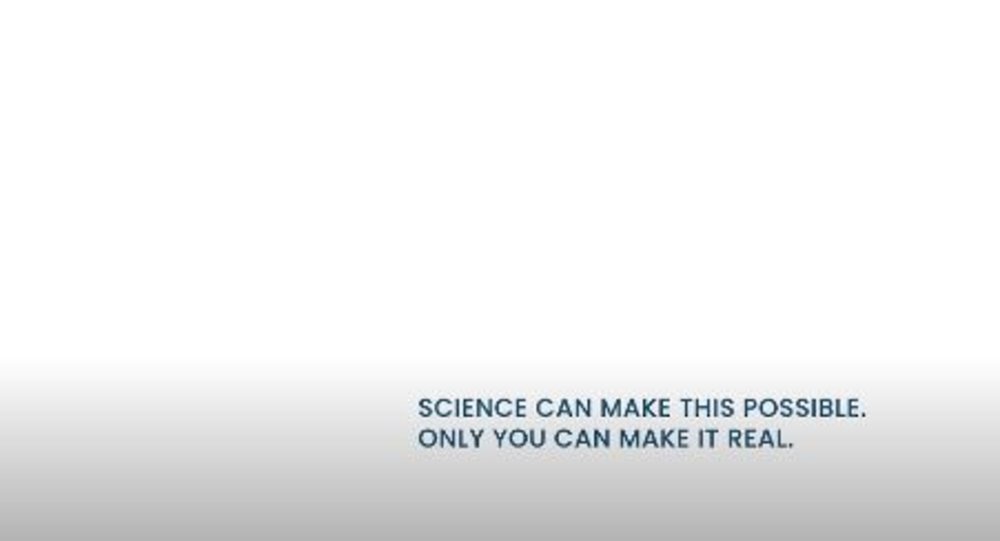
Do you expect this campaign to have further iterations?
Hahn: Well, the goal for the CDC is to get massive acceptance by June. I don't think these will wear out by then, so to do a second round means we’ve got a lot of work to do still [getting people vaccinated]. My goal, and I think the world’s goal, is that this becomes a memory in a year.
Can you tell us a bit more about the client’s response to this idea?
Von Mueffling: They were very moved. It’s rare that you get an email from somebody in the C-suite of a big company like Pfizer saying, ‘I just want to reach out. This campaign is like nothing we’ve ever done before, people here at the company were in tears, we’re so proud of it.’ It just shows what the leadership at Pfizer is like, they’re very forward thinking and open.
Greg Hahn, Mischief @ No Fixed Address
What is your single greatest learning from this campaign?
Von Mueffling: When you do something that isn’t the norm and pushes the boundaries, it may not always be comfortable at first for the client. But if you explain to them why it will work and you hold their hand in the process, and listen to them and their concerns, then they come to the table with more openness.
Hahn: Yeah, you don’t just do something because it’s different or shocking, you do something because it’s going to help solve the problem. And you have to be able to talk that through.
For me, it’s don’t shut yourself off to a certain kind of client or certain kind of work just based on what you think they’ve done in the past. Always walk into a new assignment thinking this can be as good as we can make it.
Want more of the same? /
We don’t just write about best-in-class campaigns, interviews and trends. Our Members also receive access to briefings, online training, webinars, live events and much more.


